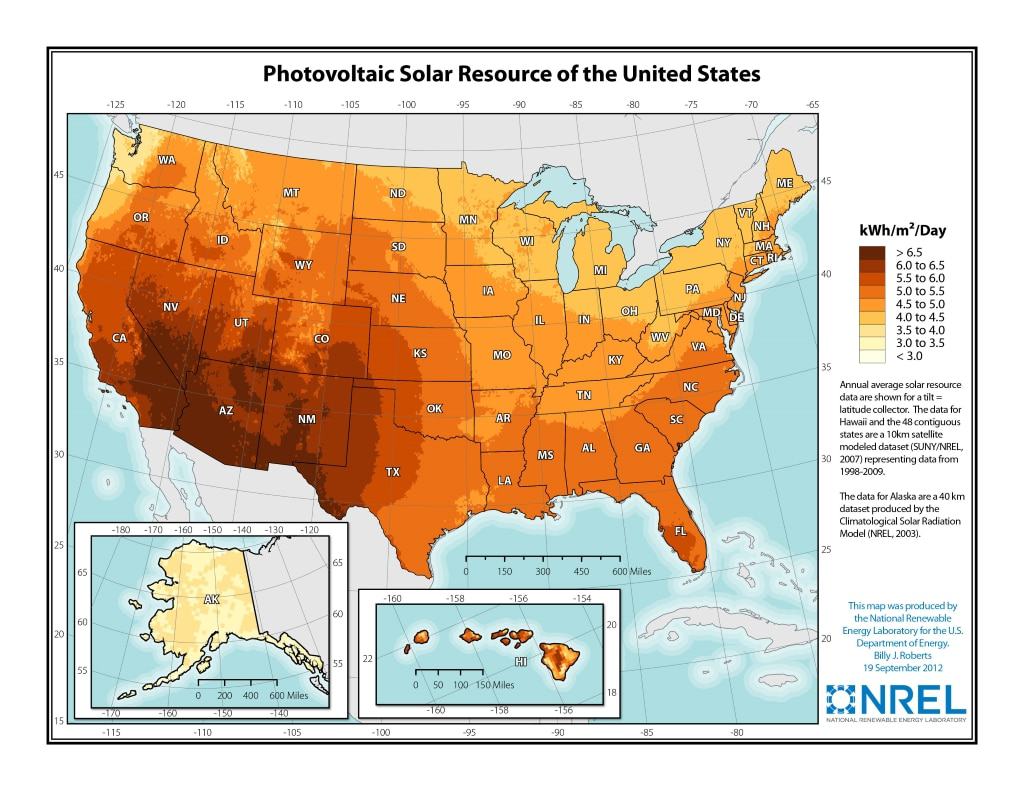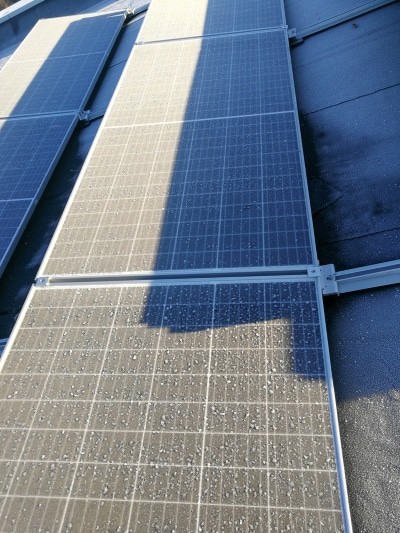
Most people want to know how many solar panels they need to go off the grid. The answer to this question is not as simple as it may first appear.
Depending on your location, the amount of sunlight you get, and the amount of power you use, the number of solar panels you need will vary. If you have a home that requires 10,000Wh (10kWh) per day and 5 hours of direct sunlight, you will need to have around 10 300W panels (equivalent to a 3kW solar array) to ensure sufficient usage.
Of course, the number of panels required is not plucked from thin air but rather based on the amount of wattage your home needs. Theoretically, a 3kW solar system array with 5 good hours will be able to produce 15kW of electricity however in real-life applications 11 300W solar panels is just about right to meet your 10kWh demands.
So let’s go through the steps to help you determine how many solar panels you need to go off the grid.
Table of Contents
Step 1 – Calculate Power Required
There are a couple of ways you can estimate your daily home usage and solar panel requirements:
Check Past Utility Bills/Utility Account Online
Calculating the power required is relatively easy if you were on the grid before. Just whip out your past 12 months’ utility bills and work out the average daily/monthly usage.
Alternatively, you can calculate the total usage manually item by item which is a more tedious approach. Nevertheless, it is the best way to get a rough idea of the amount of power you use.
Check Power Rating Plate
Most, if not all electrical appliances have a power rating plate on them that states the wattage (W or kW). Create a list and tabulate the results by multiplying the run time (hours) for each piece of equipment. Subsequently, adding them together for the power required (Wh or kWh), as shown in the table below. But be very careful to standardize the wattage used across the list. You don’t want to be getting the wrong panel sizing.
When the plate only displays voltage and amperes, and if you have long forgotten this physics formula, here it is: Power(W) = Voltage x Amps
| Appliance | Rated Watts (W) | Duration of Usage (h) | Watt hour (Wh) |
| Fridge | 250 W | 24 h | 6000 Wh |
| Laptop | 100 W | 6 h | 600 Wh |
| Oven | 1200 W | 0.5 h | 600 Wh |
| Lights | 100 W | 10 h | 1000 Wh |
| Mini-split | 700 W | 4 h | 2800 Wh |
| Water heater | 4000 W | 1 h | 4000 Wh |
| Total Watt hour | 15 000 Wh = 15 kWh |
Check Operational Manual or Equipment Specification Sheet
Most home appliances and equipment have an instruction manual or a specification sheet with the required wattage. Just grab a copy of these or simply throw in the brand and model into the online search bar of your favorite search engine and you should be able to find them.
Step 2 – Calculate Solar Potential in your Area
Finding out the solar potential is the next step. Here is a solar resource map that gives you a rough estimate of the potential for solar generation in your area.

So, if you reside in Colorado, that will give you 5-6 hours of average peak sunlight per day for a year compared to New York with less than 4 hours.
There is no doubt the sunlight will fall short on some cloudy days or seasonality. So, to ensure you have a self-sustainable home, you will need to size your battery bank right to back you up for ‘rainy days’ which we got it all covered in this post here.
Step 3 – Determining Number of Panels and Panel Wattage
With the example values, we got from step 1 and 2:
Daily required power 10kW and 5 hours of average peak sunlight.
We can start sizing the solar panel array but there are a few things to take note of:
- Do not expect the 3kW solar panel system to generate a full 3kW electricity per hour. The operating factor of the panel stands at 70-80% (2.1kW-2.4kW).
- Factor in efficiency losses from cables.
- Factor in the winter season.
Here are 2 ways to work out your solar array size:
1. Manual Calculation
| Power Demand (kWh) | Power Generated (kWh) |
| 10kWh x 5% S.F = 10.5kWh | 2.1kW x 5h = 10.5kWh |
Solar Panel Array Size = (Power Demand x 5% Safety Factor/Number of sunlight hours)/Panel Power Rating Factor
3kW = (10kW x 5% / 5)/0.7
If each panel is 300 watts, you’ll need 10 such panels.
This works out to be 3kW of solar array system to be able to barely generate the 10.5kWh you’ll need per day after factoring in the losses and safety factor. So it is wise to go slightly larger than 3kW.
2. Solar Array Online Calculator
This online solar array calculator from AltEstore can also help you achieve similar results as the manual calculation. Simply input the energy usage at step 1 and zip code or sun hours at step 5 to get 3.1 kW of the solar array.
To clear up any remaining confusion, here are more commonly asked questions:
Are Smaller Solar Panels Better?
Certainly, 30 100W panels and 10 300W panels would give you the same total wattage needed. So which configuration is better?
When we want to buy a battery, we usually opt for the cheapest that can supply the most wattage. The same goes for solar panels. As a general rule of thumb, the cost per watt should be the metric you need to be looking at. Take these 3 for example:
| 150W Solar Panel | 200W Solar Panel | 400W Solar Panel |
| Cost: $110 | Cost: $140 | Cost: $460 |
| $/W: $0.73 | $/W: $0.70 ✔✔✔ | $/W: $1.15 |
The 200W panel is the cheapest for every watt generated. However, there are other factors like solar efficiency, panel quality, and warranty coverage period that determine which panel you should go for. If you want to know more about choosing the right solar panel size, this article here explains it all.
Why not take a look at some advantages and disadvantages of both before you make your decision.
| Low-Watt Panels | High-Watt Panels | |
| Efficiency | Lower (less power(W)/area(m2)) | Higher (more power(W)/area(m2)) |
| Space Required | More space required | Less space required |
| Time of Installation | Longer – More components to mount and rack (lighter solar panels) | Short – Lesser components to mount and rack (heavier solar panels) |
| Installation Cost | Higher (requires more cables, modules and components) | Lower (requires less cables, modules and components) |
| Replacement Cost | Damage panel less costly to replace | Damage panel more costly to replace |
| Reliability | More parts and components are more prone to break down | Lesser parts and better panel quality leads to more reliable system |
Ultimately, it all comes down to personal preference and I would go for higher-quality panels that have the longest warranty coverage and the best price per power.
How to Increase a Solar Panel’s Output or Efficiency?
You may think there are ways to increase the efficiency of your panels one way or another but unfortunately, each individual panel is designed to the fixed wattage that is specified by the manufacturer.
However, there are a couple of things you can do to maximize solar energy harnessing and maintain an efficient panel:
1. Make sure the panel is in a good location without shade.
2. Make sure your panels are oriented correctly. If your panels living in the northern hemisphere, you should face them to the south to maximize the amount of solar energy that will be captured by your panels. Besides facing the right direction, slanting the panels in 30-45 degrees will also help the panel capture the maximum amount of sunlight throughout the year. At the same time, natural rainfall will give the panels a good wash down.

3. Periodic cleaning of your solar panels is important as it makes a high percentage of power loss from dust buildup. Clean it with mild soapy water with a soft bristle brush every 3-6 months to keep the energy coming!
4. Give it clearance to the base of the floor or roof when mounting the panels for air circulation to cool down the panels. In case you’re wondering why, the panel’s efficiency reduces if the temperature goes beyond 149°F.
The maintenance of solar panels is relatively easy. As the technology improves, many panels manufacturers are able to provide 15-25 years warranty with more than 80% efficiency throughout its lifespan. So, you should have no problem maximizing the energy output for many years.
Final Note
As you can see, sizing the panel it’s not as hard as you might think. That is all there is to solar panels but the whole solar energy system is a system with many components with many different configurations suited for individual household usage. In many cases, you will need to plan for battery storage, contingency backup power, and suitable voltage requirement. While this post only covers the complete guide to solar panel sizing, I highly recommend you check out the next part of this series where I discuss the complete solar energy system.
More Helpful Solar Energy Information
- On Grid Vs Off-Grid Solar System – What’s the difference and which system is better for you? In any case, you need to understand the difference before you stay on the grid or off the grid. This post explains it for you.
- How Do I Power My House Off The Grid? – If you are looking for various options to power your off-grid home and don’t know where to look, check out these 5 options in this article and decide for yourself.
- More Lower Or Less Higher Wattage Solar Panels? – Are you confused about choosing the right panel wattage and size? This post compares the cost, efficiency and panels footprint so that you can get the best out of your solar array!
- How To Choose A Solar Charge Controller? – It might be tough to understand if you don’t know how to choose a charge controller, but this post will help you get a clear idea of what to look for and how to choose a charge controller.
- How Many Batteries Do I Need To Go Off-Grid? – Batteries are very expensive and oversizing is not a smart move! This post will break down the itsy-bitsy details and will help you understand how to calculate the required number of batteries for your off-grid home.

